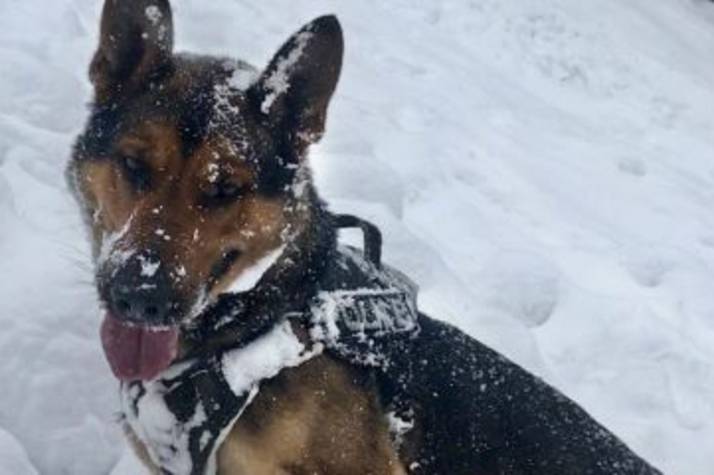Every second counts in avalanche rescue
By Paul Northcott

When avalanche dogs are deployed, time is critical for their rescue efforts to succeed.
Image by RCMP
January 2, 2019
Content
When a person is buried violently underneath metres of snow, avalanche rescue dogs and their handlers must respond rapidly — often in challenging backcountry conditions.
"If we want to find someone alive, time is critical," says Corporal Dale Ristau, a member of the RCMP's Lower Mainland Integrated Police Dog Service.
He says many avalanche victims will survive if they're found within 15 minutes, but that number drops dramatically as time goes by.
Despite best efforts to rescue victims, there are an average of 14 avalanche-related deaths in Canada each year. In those cases, the efficiency of the dog teams' work is also vital for the safety of rescuers during recovery efforts.
In 2017, an avalanche on Mount Harvey, between Vancouver and Squamish, British Columbia, killed five people. Ristau says avalanche dogs and ground search-and-rescue teams were used to locate the victims. He says it would have taken human workers hours more to cover such treacherous terrain and the large debris field on foot.
"The dogs can work quickly and that can reduce the risk for a lot of the (human) rescuers," he says.
In British Columbia's Lower Mainland, the RCMP dog service has three trained Avalanche Search and Rescue teams.
Handlers must demonstrate they can work in the snow and recognize high-risk areas for avalanches. The dogs have to prove they can find people surrounded by snow.
In the Lower Mainland — with a population of more than two million and hundreds of nearby winter recreational opportunities — that means being ready to respond on a moment's notice.
"Given our close proximity to the North Shore Mountains, Whistler Blackcomb, there's a huge recreational population where people are using the mountains for a variety of reasons," says Staff Sergeant Joel Leblanc, who's in charge of the Lower Mainland District Integrated Police Dog Services. "Sometimes people get up there, with not a lot of experience, and it's unsafe."
Ristau, a self-described outdoor enthusiast, says he's always been intrigued by the team.
"I look at the service as an extra tool to help the public, and you have a bond with the animal that's so unique. There's nothing like it in the RCMP."